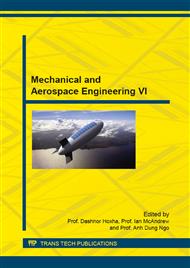p.377
p.384
p.390
p.395
p.402
p.406
p.410
p.419
p.424
Further Analysis on Silver Ions Migration
Abstract:
Silver ions migration can cause short circuit between two conductors with different voltage, and it is the main cause of many catastrophic failures in components. Since silver glue is widely used to adhere chips in the components for its low cost, being able to coated automatically and high thermal conductivity. Research on the mechanisms of silver migration is quite important for taking measures to prevent Ag-migration caused failures. In previous studies four factors has been presented which induce a silver ions migration, they are silver material, electric field, humidity, and contamination, but will it be inevitable when the above factors exist In another word, what should we do to prevent the migration In this paper, we confirm that the above four factors are necessary rather than sufficient for silver migration and present a new influence factor on silver migration through a failure analysis case, which gives an important guidance for the reliability design, evaluation and analysis of a component.
Info:
Periodical:
Pages:
402-405
Citation:
Online since:
October 2015
Keywords:
Price:
Сopyright:
© 2015 Trans Tech Publications Ltd. All Rights Reserved
Share:
Citation:


